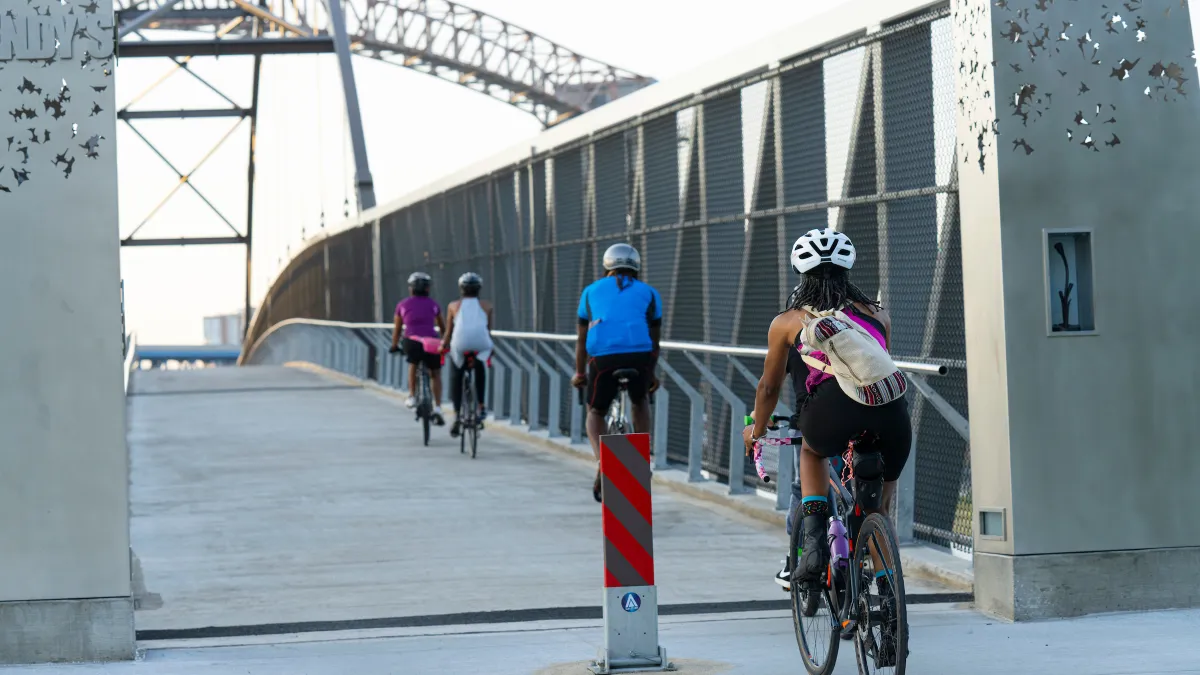Dive Brief:
- More than $830 million in U.S. Department of Transportation funds announced last week under the Reconnecting Communities and Neighborhoods grant program went to trails, walking and biking infrastructure, according to the Rails to Trails Conservancy, a nonprofit advocacy organization.
- Among the projects selected for the Reconnecting Communities and Neighborhoods program are at least four that will repurpose former railroad lines into trails.
- Additional funding of nearly $45 million is now available under the Active Transportation Infrastructure Investment program for planning and construction of connected pedestrian and bicycle networks within communities or along transportation spines between communities, regions or states.
Dive Insight:
Walking and bicycling projects “have consistently captured a sizeable portion of investment” from programs funded by the Infrastructure Investment and Jobs Act, according to an RTC press release. The $834 million going to trails represents over one-quarter of the $3.3 billion grant awards the DOT announced last week.
“Active transportation is a fundamental component of a healthy, sustainable transportation system that meets the mobility needs of all Americans,” said Kevin Mills, RTC’s vice president of policy, in a statement. “But one-time investments only get us so far. Nationwide, there are hundreds of trail and active transportation networks under development and they are in every state.”
The Active Transportation Infrastructure Investment program, also authorized by the IIJA, will provide ongoing, dedicated funding, Mills explained.
The ATIIP is managed by the Federal Highway Administration and is currently accepting applications through June 17, 2024. Eligible applicants include states or multistate groups, metropolitan or regional planning organizations, local governments and tribes.
The idea of converting old railroad lines into trails is decades old. It began to flourish in the 1980s as railroads abandoned thousands of miles of track following deregulation that allowed unprofitable routes to be discontinued. Congress provided for “railbanking,” seeking to preserve rail corridors while allowing for interim use as trails. Today, there are nearly 26,000 miles of rail-trails in the U.S., according to RTC.
The four most recent grants supporting rail-to-trail conversions will go toward turning an abandoned rail line in New York City’s Queens borough into a 0.7-mile linear park; building a 10-foot-wide, 3.2-mile shared-use path along a former Norfolk Southern Railway right-of-way in Virginia Beach, Virginia; converting an old Southern Pacific Railroad roadbed on the Pyramid Lake Reservation in Nevada into a bike path; and adapting a former rail corridor in Jackson, Mississippi, to a multi-use trail.












